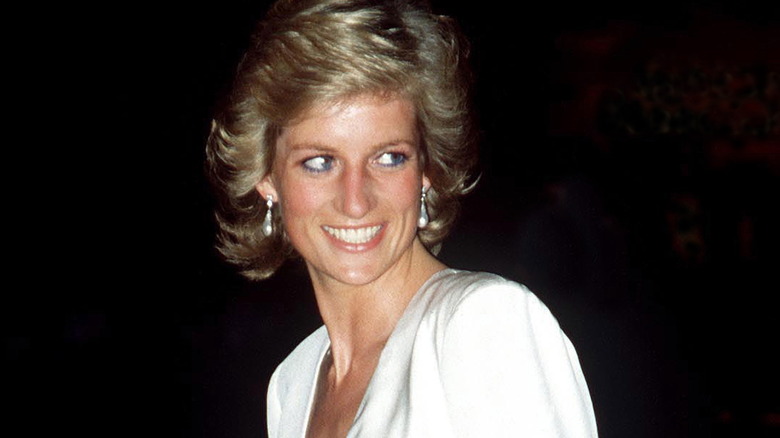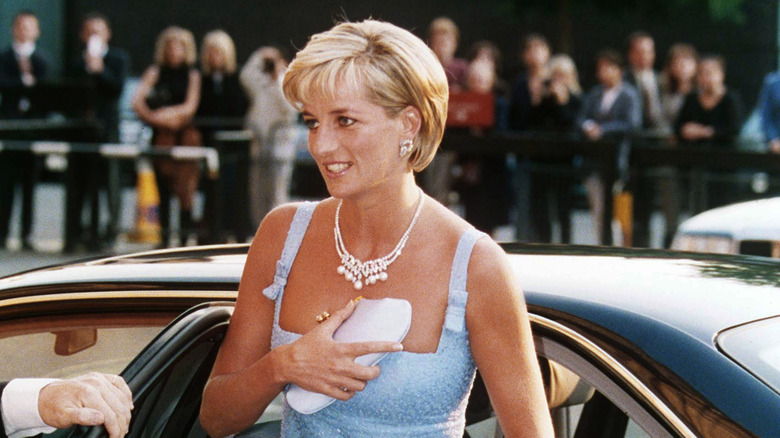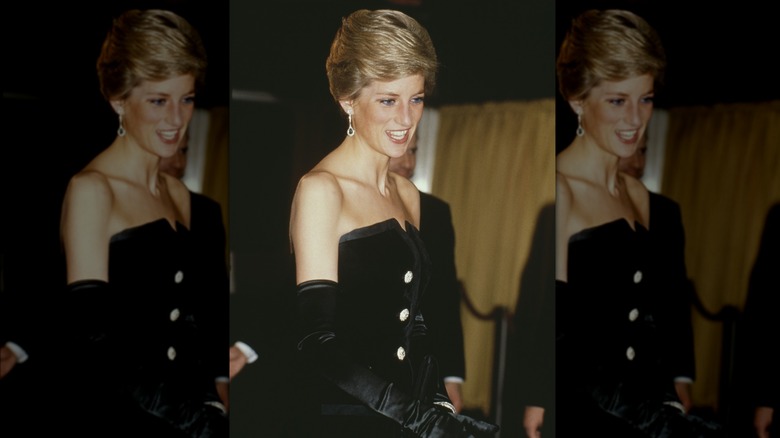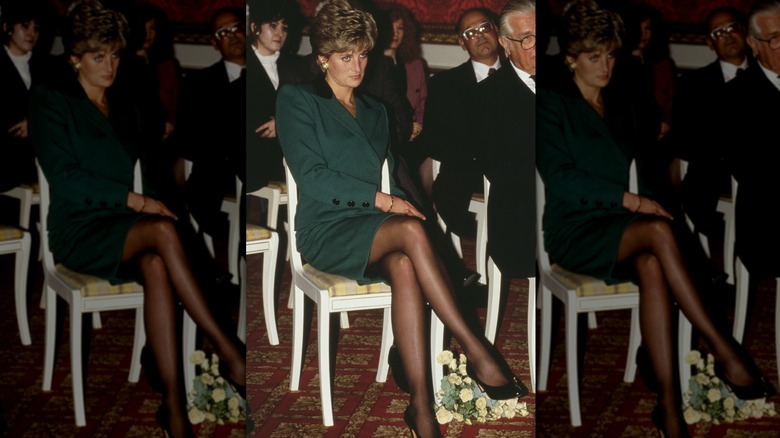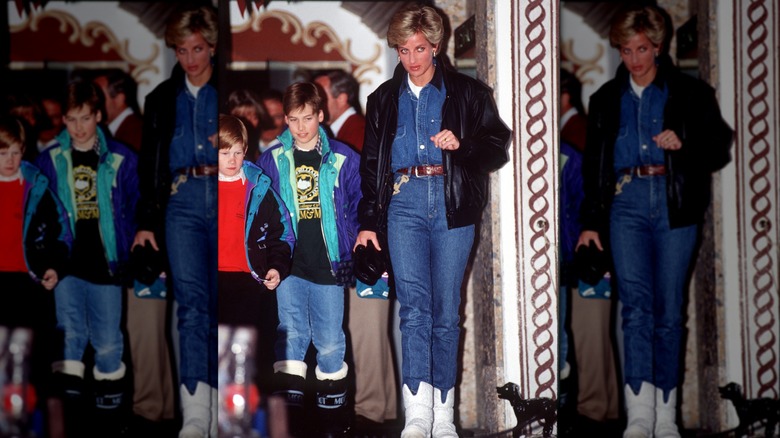The Royal Fashion Rules Princess Diana Never Followed
Princess Diana was a trendsetter and a royal rebel, creating the perfect combination of looks that have stood the test of time while shaking up dusty traditions from Buckingham Palace. The People's Princess pulled together impeccable outfits for day-to-day tasks, like running errands and picking up her sons, as well as glamorous royal banquets, all while pushing the envelope and solidifying her place as a fashion icon who's never gone out of style. It's because of this that Diana-core, an aesthetic channeling the beloved princess, is still trending hard today. There's a whole catalog of Diana's best rule-breaking outfits, where she rocked short hems and plunging necklines and looked regal while doing it. While celebrating the incredible style that Diana embodied, we're looking back at those sartorial rules imposed on royals that Diana chose to forego. And we love her for choosing her own path, where her unique style captured that independent, vivacious spirit we so admire.
Royal women were expected to wear high necklines
One of the central fashion rules for royal women had to do with covering their necklines. Exposing cleavage was a no-no, and tops should be modest and covered, according to Vogue Australia. Princess Diana was not about to be limited by these royal regulations. She frequently wore sleeveless dresses with low, scooped necklines, plunging halter-top dresses, and off-the-shoulder gowns. The only time the outfit posed a risk was when she had to bend down, particularly when getting out of a car, so she came up with a solution. Handbag designer Anya Hindmarch, who worked with Diana often, told The Telegraph how the princess strategically used her bags to keep covered. "We used to laugh when we designed what she called her 'cleavage bags,' little satin clutches which she would cover her cleavage with when she stepped out of cars," Hindmarch said, (via Good Housekeeping). This way, Diana got to wear what she loved, while still satisfying royal protocol.
Royal women were expected to wear gloves when meeting the public
There was longstanding royal protocol around the use of gloves; the late Queen Elizabeth II frequently wore gloves when meeting the public to prevent the spread of germs, according to the BBC. However, Princess Diana saw the hand coverings as a block when trying to intimately engage with people; she felt similarly about the hats so synonymous with royal women's fashion. Curator and expert on Diana's style, Eleri Lynn, told People about Diana's choice to forgo this royal rule. "She abandoned the royal protocol of wearing gloves because she liked to hold hands when visiting people or shake hands and have direct contact," Lynn explained. "She also stopped wearing hats because she said, 'You can't cuddle a child in a hat.'" So Diana's independence here was all about engaging genuinely with people.
Black is for funerals, according to royal fashion etiquette
Princess Diana loved to wear black. She wore onyx-tone ballgowns, as well as simple dresses and pant suits during the day in ebony hues. However, as far as royal etiquette goes, black is a tricky color. Since it's associated with funerals, royals are expected to wear black only in mourning. While we occasionally see royal women wearing black evening wear, the tone is strictly prohibited during the day. Chief executive of The English Manner etiquette training, Alexandra Messervy, told InStyle: "Generally it is thought that black is not usually worn unless in mourning, although Diana Princess of Wales did occasionally wear it for evening functions," (via Express). We have to push back against this a little. Diana didn't just wear black for evening functions; the princess loved black even during the day. We love her chic style and rebellious spirit, and how she looked fabulous while breaking the rules.
Royal women are encouraged to wear longer skirts
Short skirts and dresses are another royal no-no when it comes to selecting outfits for public events. While the late Queen Elizabeth II favored a longer hemline, like a midi-cut, Princess Diana chose to do her own thing. The late Princess of Wales frequently wore skirt suits and dresses with a hem that cut well above the knee. Sometimes she rejected tights or stockings — another royal faux pas — and went bare-legged; at other times, she styled her short skirts with sheer or black tights.
Diana's hemline was a topic of global discussion, something that designer Catherine Walker addressed in her 1998 memoir, "Catherine Walker: An Autobiography by the Private Couturier to Diana, Princess of Wales." Walker wrote, "Over the years the princess's skirts had been a busy topic for fashion journalists. It is true they went up and down, and in my memory they are a little like a barometer that altered to reflect her changing life. At the time of her divorce they lengthened; shortly before her death they were probably the shortest. I always liked the fact that she didn't follow fashion but did what was right for her," (via Newsweek). Indeed, Diana's decision to break royal rules was a way for her to embody independence.
Denim was too casual for the royal family to wear
Denim has been another tricky issue in royal fashion rules. Traditionally, since denim is so casual, members of the royal family are encouraged to steer clear. "Many places will not allow jeans as they are still seen as very casual wear, so it is better to play safe for both sexes," Diana Mather, tutor for The English Manner etiquette consultancy, told the BBC while speaking of the royal family's dress code. While it was certainly rare to see older generations of the royal family in jeans, Princess Diana paved the way for younger generations to enjoy denim. Diana frequently rocked killer '80s jeans or denim-on-denim looks, which are still as hot as ever, styling them with leather moto jackets. She crushed the casual denim trend, so much so that her daughter-in-law, Catherine, Princess of Wales, famously sports jeans now. We see Diana pushing back on the royal rules so that there would be more freedom for future generations.
